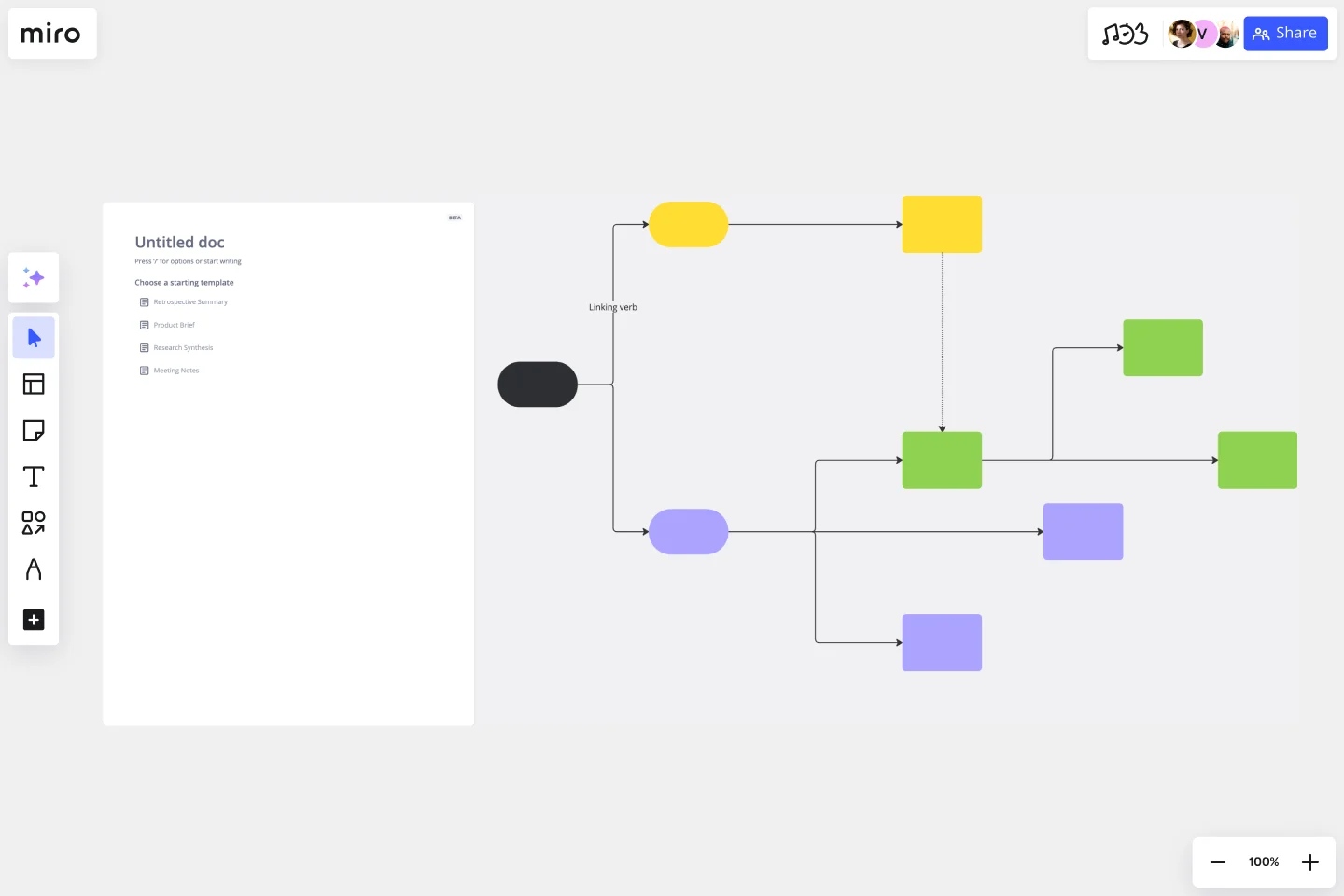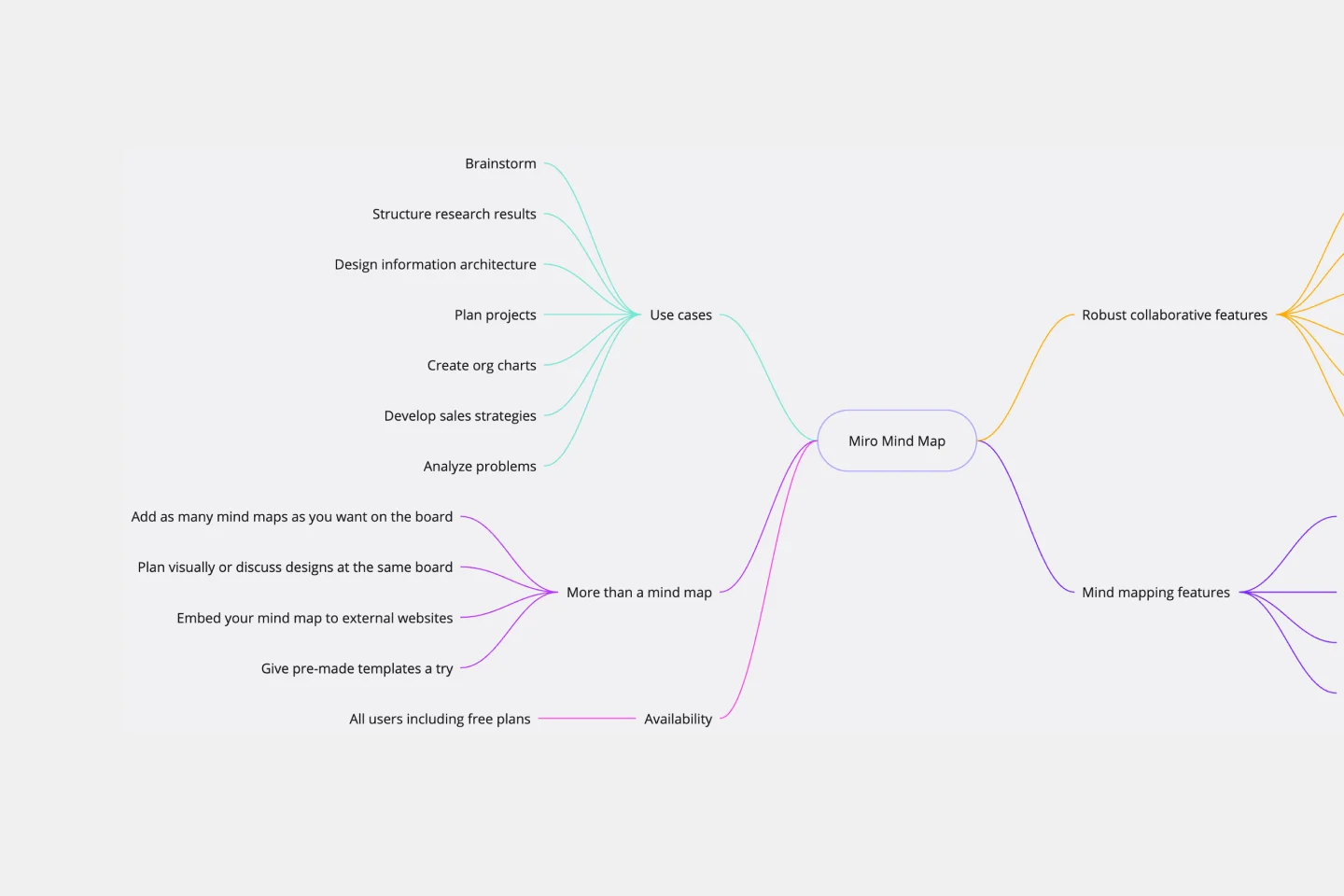All templates
Decision Tree Template

Miro
Your virtual workspace for innovation
Miro is an innovation workspace designed for teams of every size, everywhere, to dream, design, and build the future together. Our mission? To empower these teams to create the next big thing, powered by AI at every step of the way. Over 90 million users around the world rely on Miro to untangle complex ideas, put customer needs first, and deliver products and services faster. All supported by best-in-class security, compliance, and scalability.
Categories
Similar templates
Opportunity Solution Tree Template
12 likes
330 uses

Concept Map Template
11 likes
1.6K uses

Mind Map Template
14 likes
1.1K uses

Opportunity Solution Tree Template
12 likes
330 uses

Concept Map Template
11 likes
1.6K uses

Mind Map Template
14 likes
1.1K uses
